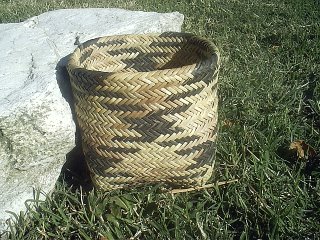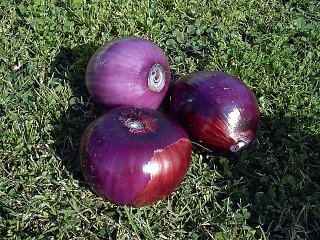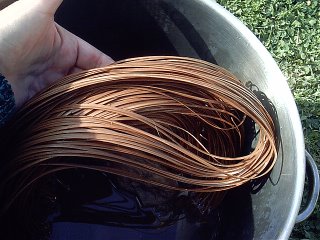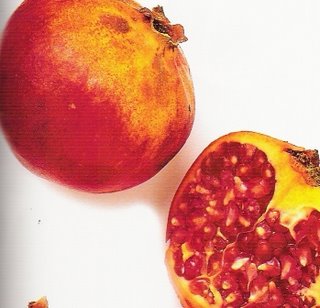I must say this is an extremely interesting subject because if you pre mordant you will get various colors, then add the fibers to the dye bath the colors will dye depending on the type of mordant used and then if you add a color modifier after you dye the same fibers, you will get even more variations of colors. Fibers that are say pre mordant in all five mordants below will yield 5 different colors, then when these fibers are added to say a madder dye bath, you get 5 different colors again, then using the same dyed madder fibers and putting them in 5 different color modifiers you get another 5 different shades. So out of 5 different mordant fibers groups, you would get up to 15 different color variations.
The basic difference between mordant and color modifier is when you apply it to the cane. A mordant is applied before putting the cane in a dye bath. A color modifier is used after you have dyed the cane. If you use the all in one method, they probably become more color modifiers than mordants. Plain table salt or other salts are also considered a mordant, although they would probably not be considered color modifiers. Anything applied to the cane to help the color adhere to the cane would be a mordant and some mordants work better with some dye stuff than others. If the color modifier (mordant) is applied after dyeing then you are more likely to get a change in the original dyed material. Putting your cane in a mordant solution alone prior to dyeing it is said will help the dye *stick to* the cane, if you add it to the dye pot at the same time, the mordant has a tendency to adhere to the dye and leave the cane out of the loop, thus not being quite as affective. I think I really like blood root...you get a really nice good clear or dark color with none of this fuss!!
The major types of Mordants are: Alum, copper, iron, tannin and rhubarb leaf solutions.
The major types of Color Modifiers are: Acid (clear vinegar), Alkaline (washing soda), Copper and Iron. Wood ash if you have a wood stove or fire place. Clear vinegar and ammonia can also be used as modifiers. One or two teaspoons of vinegar makes an acidic modifier and a few drops of ammonia makes an alkaline modifier.
So as you can see both copper and iron depending on when you add it to your fibers will give you a different result.
The mordants help the dye *stick* to the fibers so to speak and if added before you dye the fiber gives you also more control over the coloring process.
For color modifiers: 1 tablespoon of modifier crystals dissolved in 2 pints of boiling water will be enough for several applications because you only use 1 or 2 teaspoons of the modifier solution each time.
You can pre mordant, dye and then use more than one color modifier as well. Put the dyed fibers into one modifier and then put it into another. Sometimes more than one pot or kettle or bowl is necessary, since you need to keep the modifiers separate. The all in one method probably wouldn't work if using more than one mordant or modifier.
Actually it appears that any of the mordants can also be used as color modifiers, if used after the fiber has been dyed and any of the color modifiers can also be used as mordants. Tannin can be used as a dye, as can any of the other mordants, since they will give give a different shade to the original fiber. Tannin produces tans, copper a pale blue, alum a yellow and rhubarb a grayish tan.
All you need do is add 1 to 2 teaspoons of the mordant or color modifiers to a pot of water, 4 to 8 gals, although a gal would work, and stir well, then add your fibers. However, with color modifiers you won't be able to see the change if you add it to your dye pot, so making a modifier solution say with one gallon of water would seem to work as well. Then after you have dyed the cane you can then put it into the color modifier solution. You do not need to leave the cane in these modifiers for very long to see the changes. Just leave it in long enough to get the desired color and in some cases that may not be more than a minute, give or take a few seconds.
For acidic modifiers, most common is clear vinegar, add the dyed fibers and simmer for 5 to 10 minutes. Remove the fibers when the color changes, rinse well. You can also do this in a cool solution, just take bit of vinegar say in a bowl, then a sample piece of your cane and dip it into the vinegar. This one will help some reds, as in my red onions. You should however, test any of these on a sample before immersing your entire coil of cane into the solution.
For alkaline modifiers, most common is washing soda (Arm & Hammer Soda) add the dyed fibers, no need to heat, soak them for about 1/2 hour, if the color change is not enough, remove the fibers and add more alkaline modifier and then add the fibers again. Repeat this until the desired color is achieved. Remove the fibers and rinse well. This one likewise can be done in cool water, this will turn towards yellows.
For copper add the fibers and simmer for 10 to 15 minutes until the color changes, remove the fibers and rinse well.
For iron add the fibers and simmer for about 5 minutes, remove fibers and rinse well. (this may not work with walnut - but I am certainly going to give it a try, watch for the results!). I did a couple of samples of iron modifiers and you really need very very little of this to change the color. My water was very light yellow and it still turned one sample grey, this was the cane that had the alum added to the dye pot while dyeing and the other really black, this was the cane that was dyed with red onion. So start with just a very little and if need be add more unless you want black, then a larger amount is needed.
Let's just say, you will probably get different color results with cane or reed than you do with wool. You also may or may not need more dye stuff for cane and reed than you would for wool.
Also remembering that Hamburg cane has already been *chemically treated* to remove the hard outer shell, so by rinsing and washing the cane first in a mild dish soap, this might make a difference as well.









